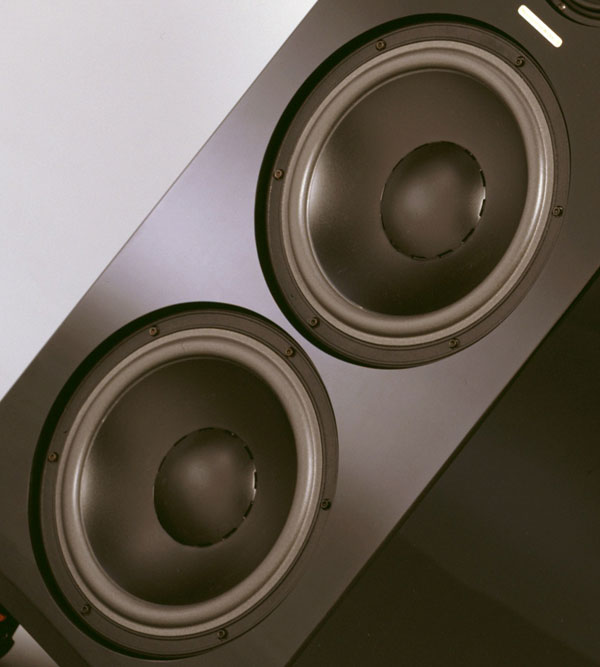The highly damped enclosure uses a "pressure-release" design with large round ports that are tightly packed with special stuffing, which is said to eliminate the back-pressure distortion of sealed systems and the boom of conventional ported designs.
EgglestonWorks Savoy Speaker


Two 12-inch woofers on the front are joined by two more on the rear in push/push pairs in which the rear woofer maintains a constant air load on the front woofer. The highly damped enclosure uses a "pressure-release" design with large round ports that are tightly packed with special stuffing, which is said to eliminate the back-pressure distortion of sealed systems and the boom of conventional ported designs.

A 1-inch fabric-dome tweeter sits at the mouth of a transmission-line chamber and is flanked above and below by two 6-inch polypropylene midrange drivers that employ their own pressure-release loading to avoid cabinet resonances. Below this trio is a 6-inch carbon-fiber driver on the front and another one on the back in a push/push pair within their own pressure-release chamber to reproduce the midbass.
The resulting frequency range extends from 16Hz to 40kHz (-6dB); a tighter tolerance can be found from 20Hz to 20kHz (±1dB). The minimum impedance is 5Ω at 26Hz, and the sensitivity is 85dB/W/m.

Two versions are available—the standard Savoy at $44,000/pair and the Savoy Signature (pictured above) at $55,000/pair. What's the diff? The Signature offers an upgraded mid-woofer and crossover as well as high-gloss automotive paint and aluminum side panels and baffle plates.
Either way, the sound is sure to be spectacular. After all, world-renowned Wisseloord Studios in the Netherlands is installing five Savoy Signatures in a surround configuration in its new facilities. If they are good enough for the world's top recording engineers, they are certainly worthy of the best consumer systems.
- Log in or register to post comments


The highly damped enclosure uses a "pressure-release" design with large round ports that are tightly packed with special stuffing, which is said to eliminate the back-pressure distortion of sealed systems and the boom of conventional

Two 12-inch woofers on the front are joined by two more on the rear in push/push pairs in which the rear woofer maintains a constant air load on the front woofer.
St. Charles Mobile Mechanic Co.






























































